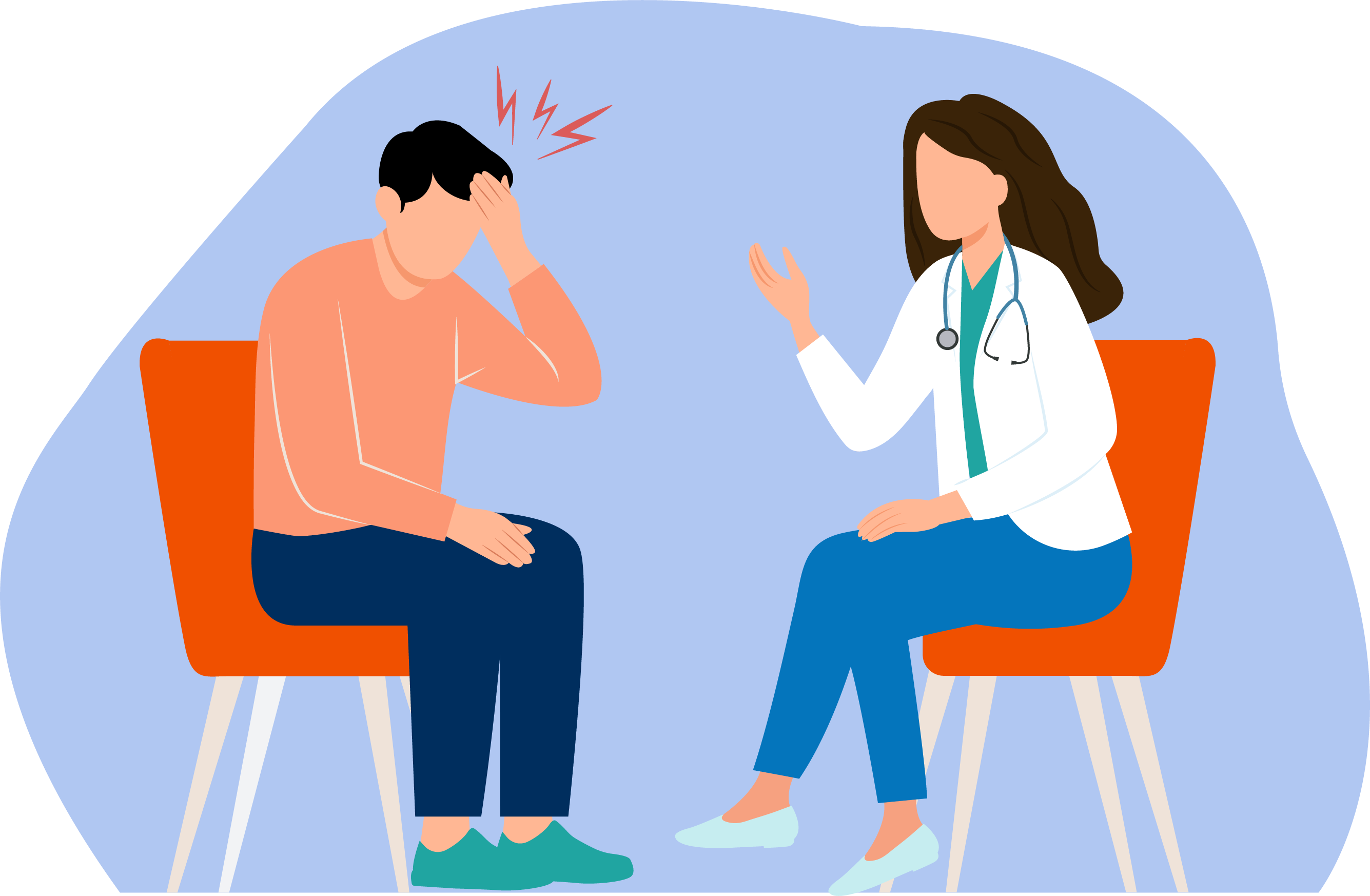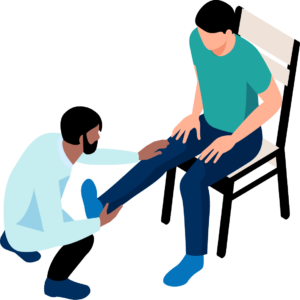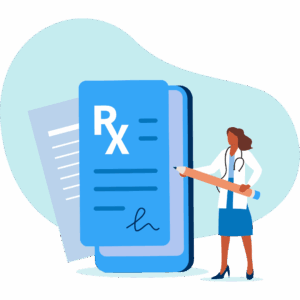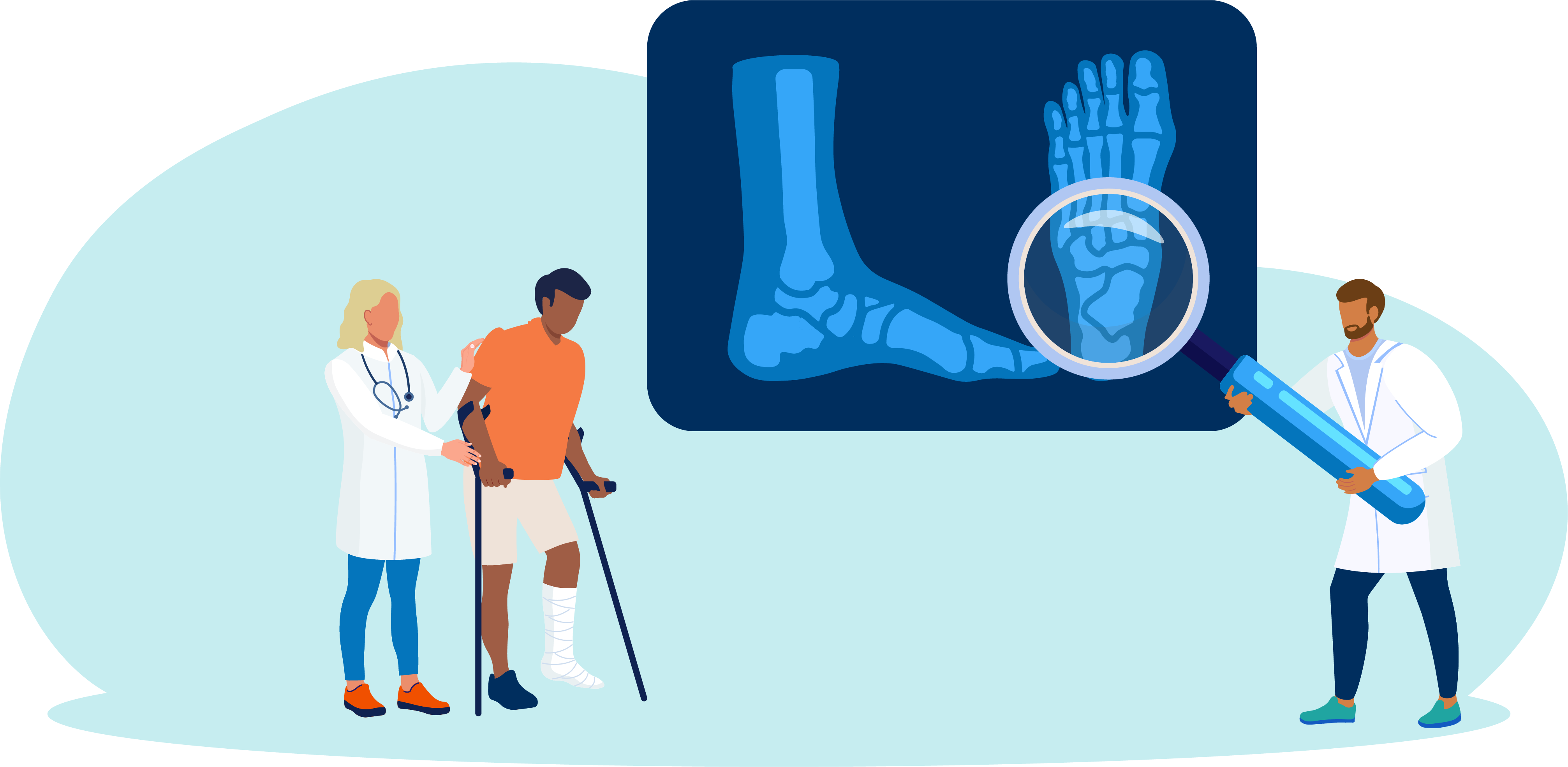Pain ManagementSurgery Pain Management
OPEN strives to educate and collaborate with healthcare providers and patients on best practices for managing pain after surgery by promoting the use of non-opioid and non-medication pain management strategies for improved patient outcomes and overall health of our communities. Our surgical opioid prescribing recommendations have been implemented at hospitals around the country. Whether you are a provider or patient, you will find resources with actionable ways to best manage pain after surgery.
Patients
Preparing for Surgery
Pain after surgery is normal and expected. You may hear it called acute pain, because, while it can cause considerable discomfort, it usually begins to get better a few days after surgery. Before surgery, talk with your surgeon about any medications or substances you take as these may impact your pain control. Ask your surgeon what type of pain is expected after surgery and what you should do to control your pain. Options to control pain may include using over the counter (OTC) medications, non-medication options and if prescribed, opioid medications. If you are prescribed an opioid medication, it is important to know the risks, potential dangers and side effects, and how to minimize risk to yourself and others.
Recovery and Pain Expectations

Each person recovers from surgery in their own way, and someone who has the same procedure might have a completely different experience of pain. Pain after surgery is normal and tells you that your body is healing, and you might need to balance activity with rest. It is an uncomfortable but natural part of recovery. While everyone feels pain differently, typically surgery pain is the worst during the first 2-3 days after and then begins to get better.
The goal of pain management is for you to do activities of daily living like:
- Eat
- Sleep
- Breathe deeply
- Walk
Pain may be well-controlled with a schedule of over the counter (OTC) medications like acetaminophen (Tylenol®) and ibuprofen (Motrin®, Advil®). Adding non-medication options to your pain management plan can help to successfully treat pain.
Talk to Your Surgeon
Before your surgery, it’s important to talk about the following:
Medications and Substances You Take
Review with your surgeon and ask for recommendations for how to take your medications prior to surgery including:
- Alcohol
- Tobacco
- Antidepressants (like Prozac® or Celexa®)
- Sedatives (like Ambien® or Seroquel®)
- Benzodiazepines (like Valium®, Xanax®, or Klonopin®)
- Stimulants (like Adderall®, Ritalin®, or Vyvanse®)
- Opioids (like Oxycodone®, Vicodin®, or Norco®)
- Any other substances (like Marijuana, Crack/Cocaine, Methamphetamine)
Pain Expectations
Ask your surgeon about:
- What type of pain you will have
- How long you should expect to have pain
- What you should do if your pain is not controlled
Non-Medication Options
There are many non-medication options that play an important role in managing pain and reducing anxiety. You can use these methods, along with the medications your surgeon has recommended, to help manage pain. Using these methods may allow you to decrease use of opioids or other medications and avoid their side effects.
| Mindfulness or Meditation | Music | Books |
| Calm breathing, like belly breathing or square breathing, can help to relax muscles that are tense because of pain or anxiety. This is called Mindful Breathing. You can also focus your mind and visualize a particular place you enjoy that makes you feel calm, relaxed, and comfortable. | Music may be very comforting when you are experiencing pain or discomfort. Listening to music, singing, or writing songs can help to lessen pain and anxiety. | Before surgery, take time to select a few books that you would like to read while you are recovering. This can help you to feel relaxed and distraction from pain after surgery. |
| Sleep or Relaxation | Ice or Heat | Compression |
| Take time during your recovery to rest and relax. Sleep helps the body heal. | Talk to your surgeon to determine if ice or heat would be helpful to your recovery.
| Talk to your surgeon to determine if compression of the surgery area would be helpful to your recovery. Using an ‘abdominal binder’ after surgery can provide comfort especially when moving around. |
| Short walks | | |
Taking a short walks after surgery is so important! Walking helps to:
-Get blood flowing in your body which helps you heal and reduces risk of developing blood clots
-Regain your strength and mobility before surgery
-Reduce constipation
-Improve mood and anxiety
| | |
Using Over-the-Counter (OTC) Medication
Using medications like ibuprofen (Motrin or Advil) and acetaminophen (Tylenol), that you can purchase at your local pharmacy, can be very effective at managing your pain after surgery. Each works in different ways to manage pain and can be taken together at the same time.
Ask your surgeon:
- If you can use OTC medications like Motrin or Tylenol after surgery to manage pain
- What dose and how often to take
- Example: For the first 3-5 days after surgery, take Tylenol and Motrin at regularly, scheduled times and then as needed as pain improves
Sample schedule and doses for OTC medications:
| Time | Medication (Dose) |
| 9 AM | TYLENOL (1000mg)
MOTRIN (600mg) |
| 3 PM | TYLENOL (1000mg)
MOTRIN (600mg) |
| 9 PM | TYLENOL (1000mg)
MOTRIN (600mg) |
Give the dose your doctor recommends: It is important to use the dose your surgeon recommends even if it is different from the dose listed on the medication bottle.
Opioid Use for Surgical Pain
Sometimes your surgeon may prescribe an opioid to manage surgical pain.
What is an Opioid?
An opioid is a prescription pain medication that may be prescribed by your surgeon to use after surgery for pain control.
Most Common Opioids
These are the most common opioids with their generic names and their brand names.
| Generic Name | Brand Name |
| Codeine | Tylenol® #3* or #4* |
| Fentanyl | Duragesic® |
| Hydrocodone | Vicodin®*, Norco®* |
| Hydromorphone | Dilaudid® |
| Methadone | Methadose® |
| Morphine | MS Contin®, Kadian |
| Oxycodone | Percocet®*, OxyContin® |
| Oxymorphone | Opana® |
| Tramadol | Ultram®, Ultracet®* |
*Contains acetaminophen (Tylenol®). Use caution if you’re taking acetaminophen.
Opioid Use
Because of their risks, opioids are not usually the starting point to manage acute pain after surgery. OTC medications like Tylenol and Motrin and non-medication strategies should be tried first to manage pain. Your provider will work with you to tailor your pain management plan.
- If an opioid medication is prescribed to you by your surgeon, it is usually only for managing severe breakthrough pain that is not controlled by OTC medications and non-medications strategies.
- Even if you are using an opioid medication for breakthrough pain, you should still continue to use the OTC medications recommended by your surgeon and non-medication strategies.
- As your pain gets better, stop using or use fewer opioids at a time.
- Do not use opioids at the same time as alcohol, benzodiazepines, muscle relaxers, sleep aides, or other medications that can cause sleepiness.
- If you are pregnant or planning to become pregnant, using opioid medications can cause harm to a fetus, including neonatal abstinence syndrome.
- Talk to your Surgeon about a prescription for Naloxone which is a medication that temporarily reverses the dangerous effects of an opioid overdose.
Side Effects from Opioids
Anyone who uses an opioid is at risk for these potential side effects. Contact your surgeon if you experience any of these.
Constipation (difficulty having a bowel movement)
Impaired motor skills, thinking or judgment.
Risks of Using Opioids
Anyone who uses an opioid, even for a short time, is at risk for dependence, tolerance, misuse, addiction, and overdose. This risk may be higher in individuals with a history of substance use disorder, tobacco use disorder, mental illness, long-term (chronic) pain, sleep apnea or breathing problems, and taking opioids for longer than a few days or more often than prescribed.
Tolerance
When an opioid no longer has the same effect on your pain as it first did, which means you need a higher dose to control pain. For example, if you are taking an opioid which first worked well for pain, and then later it doesn’t work as well, it does not always mean the pain is worse. Instead, you may have become tolerant to the opioid.
Dependance
When your body has started to rely on the opioid to function. This can happen even with using an opioid for a short time period, but the longer you take an opioid, the higher the risk. This is one reason why it is important to use an opioid for as short a time as possible. Suddenly stopping an opioid when a person is dependent causes symptoms of withdrawal, such as muscle aches, yawning, runny nose and tearing eyes, sweating, anxiety, difficulty sleeping, nausea/vomiting, and/or diarrhea.
Misuse
When you take the opioid you were prescribed at a higher dose, more often, or for reasons other than which it was prescribed.
Addiction
When you develop a brain disease known as Opioid Use Disorder (OUD). People with this condition seek and use opioids even though they are causing them harm.
Overdose
When you take a dose of medication that is too high for them. This affects breathing and can cause your child to stop breathing.
Diversion
When anyone other than you gets and uses the medication that was prescribed to you. This can happen when you do not safely dispose of an opioid or leave it unattended. Diversion is dangerous because it can lead to misuse, overdose and/or opioid use disorder in others. Sharing or selling an opioid is a felony in the state of Michigan.
Overdose and Death
Opioids can cause slowed breathing and lead to overdose and death. Discuss the following signs and symptoms of an overdose with your family and friends.
- Cannot be awakened or are unable to speak
- Vomiting or making gurgling noises
- Limp body that may seem lifeless
- Fingernails or lips turned blue/purple
- Extremely pale or feels clammy to the touch
Talk to your surgeon about a prescription for Naloxone which is a medication that can temporarily reverse the dangerous effects of an opioid overdose.
Learn more about Naloxone
Tips for Reducing Opioid Risk
- Tell your doctor about any other medications you are taking and if you have a history of opioid misuse or addiction, depression or anxiety, or a family history of addiction.
- Do not use opioids along with antihistamines or sleep medications.
- Only use the opioid medication for the reason, dose, and frequency that it was prescribed, and use it for the shortest possible time period. If you do not need it, don’t use it and dispose of it properly.
- Write down what medications you are taking and when. This will help you be sure you’re using the medication only as prescribed.
- Double-check dosing to make sure you’re taking only the amount prescribed.
- Watch for signs of side effects or complications, and if you notice them, contact your provider. Inform your support person(s) if you are taking an opioid, signs and symptoms of an overdose, and if you have naloxone to reverse an overdose.
- Do not share your opioid with anyone else. It is a prescription only for you.
- Practice safe opioid storage and disposal.
Learn more about Safe Storage + Disposal

Healthcare Providers
Evidence for Practice Change
With over a decade of research on the opioid epidemic, evidence consistently shows that using fewer opioids is both safe and effective for managing pain while reducing risks to patients and communities. Notably:
Greater than 70% of prescribed opioids are not used 1,2
Reducing opioid prescribing improves the safety for patients, families, and communities
- Postoperative opioid prescribing varies significantly1
- Prescription size was the strongest predictor of patient consumption3
- Evidence-based opioid prescribing guidelines for the perioperative period are needed to enable tailored prescribing for patients and reduce excess opioid pills within communities4

No correlation between patient satisfaction scores and amount of opioid prescribed5
Prescribing more opioids does not improve patient satisfaction
- Patients who were prescribed fewer opioids reported using fewer opioids with no change in pain scores6
- Prescribers can feel empowered to reduce their initial opioid prescription without impacting patient satisfaction5
No Correlation between probability of refill and amount of opioid prescribed7
Prescribing fewer opioids initially does not correlate with an increase in refill requests
- Prescribers could prescribe smaller opioid prescriptions without influencing the probability of a refill request7
- Implementation of evidence-based prescribing guidelines reduced post-laparoscopic cholecystectomy opioid prescribing by 63% without increasing the need for medication refills6
6-10% of surgical patients develop new persistent opioid use8,9,10
New persistent opioid use is one of the most common surgical complications
- Many patients continue to use their opioids for reasons other than surgical pain9,10
- New persistent opioid use after surgery is an underappreciated surgical complication that warrants increased attention8,9,10
Best Practices for Managing Surgical Pain
Screen, Prescribe, Educate, Coordinate
Identifying patients who may have risky substance use is most successful when done in a non-biased, non-stigmatizing way. Universally screening patients using a validated, standardized screening tool helps to mitigate these factors. Best practices for managing a patient through a surgical experience look like:
SCREEN
Screen for opioid use and substance use before surgery to identify those at risk for poor pain and opioid use outcomes:
-
- Consider using the TAPS Screening Questionnaire, a validated way to screen patients for risk before surgery
- Identify patients at increased risk of respiratory depression: Concurrent medication use (e.g., prior opioid prescriptions, sleep aids, benzodiazepines), obstructive sleep apnea, obesity, neurological disorder, oxygen desaturation prior to discharge
- Use language that respects individuals with substance use disorder to mitigate stigma
PRESCRIBE
Prescribe using OPEN’s guidance:
| DO | AVOID |
Prescribe acetaminophen and NSAIDs, unless patients have contradictions or high risk adverse effects.
Giving families a prescription helps them understand these are the first-line medications for pain management. Refer to the OTC Quick Reference Sheet | Prescribing codeine or tramadol. Due to pharmacogenetic differences, codeine and tramadol are poor choices for pain management and should not be prescribed |
| If prescribing opioids is indicated, then follow OPEN's Acute Care Opioid Prescribing Recommendations | Prescribing fentanyl or long-acting opioids (e.g. OxyContin®) |
| Access the prescription drug monitoring program (PDMP) prior to prescribing controlled substances schedules 2-5, in compliance with state law | Prescribing opioids that contain acetaminophen (e.g. Norco®, Vicodin®, Percocet®) to minimize risk of acetaminophen overdose |
| Consider co-prescribing naloxone to patients on high doses of opioids or Medications for Opioid Use Disorder | Prescribing opioids with other sedative medications (e.g., benzodiazepines, skeletal muscle relaxants) |
EDUCATE
Educate patients and families:
-
- Acetaminophen and NSAIDs should be used together as first-line medications for postoperative pain in surgical patients, unless patients have contraindications or high risk of adverse effects
- Use of prescription opioids ONLY to manage severe breakthrough pain that is not relieved by acetaminophen and NSAIDs
- Pain expectations and how to taper opioid use as pain improves
- Pain usually peaks and then improves after the first 2-3 days following surgery
- The risks and side effects of opioid medications (sedation, respiratory depression, dependence, withdrawal, addiction, overdose)
- How to safely store and dispose of opioids
- Appropriate use of naloxone, if prescribed
COORDINATE
Coordinate postoperative pain management plan
-
- Coordinate with anesthesia, and consider nerve block, local anesthetic catheter or an epidural when appropriate
- Connect with the patient’s primary care provider and/or usual prescriber with information about the patient’s operative procedure and the plan for management of acute postoperative pain
- If the patient screens positive for risk of SUD, consult an addiction medicine specialist

Preoperative Medication Counseling
As prescribers write for fewer opioids, there may be concern about possible increase in phone calls for refills or inadequate pain management. However, OPEN research shows that with appropriate patient education, not only did patients consume less medication, but requests for refills did not increase and patient satisfaction was unchanged. To ensure appropriate pain management, all patients and support person(s) should receive preoperative counseling about postoperative pain and how to manage it.
Set Clear Expectations
Talk about the experience of pain and usual length of recovery with the patient and their support person(s).
- “Some pain is normal. You should be able to walk and light activity but may be sore for a few days. This will gradually get better with time.”
- “Half of all patients who have this procedure take less than five doses of an opioid medication.”
Discuss Effective Alternatives
Discuss use of the over-the-counter medications.
- “Tylenol and Motrin are the first medications we use to manage pain after surgery. By themselves they are often enough to manage your pain.”
- “You should take 1000 mg of Tylenol and 600 mg of Motrin together every 6 hours around the clock for the first 3 days after surgery.”
Explain Safer Use
Explain when opioids should be used.
- “This opioid medication is only for managing severe pain from your surgery and should not be used to manage pain from any other condition.”
Talk About Risks
Talk about the possible risks associated with opioids.
- “We are careful about opioids because they have been shown to be addictive, cause harm, and even cause overdose if used incorrectly or misused.”
Advocate for Disposal
Let patients know that they should dispose of medications after their acute postoperative pain has resolved, and how they should do this.
- “Disposing of the opioid medication prevents accidental overdose or misuse. You can use a drug disposal bag, take the pills to an approved collector, often at a police station or pharmacy, or mix the medication with kitty litter in a sealed bag and throw it in your household trash.”
First-Line Medications for Pain Control
Prescribe Acetaminophen and NSAIDs*

Since acetaminophen and ibuprofen are available over the counter and don’t require a prescription for patients to use, patients and their caregivers often do not receive instructions on how to use them after surgery. The packaging instructions for acetaminophen and ibuprofen provide minimal dosing and recommend as-needed use. If these instructions are followed, patients may be underdosed and inadequately addressing their pain. In addition, if patients were prescribed an opioid, they may think this is the first medication they should use for their pain, not understanding that acetaminophen and ibuprofen often provide adequate pain relief when appropriately dosed and that an opioid may not be needed.
*Unless contraindicated
Your Guidance Can Make a Difference
Even though available OTC, acetaminophen and ibuprofen can be sent electronically as prescriptions to a patient’s pharmacy. When acetaminophen and ibuprofen are written as prescriptions and instructions on how to use them are provided, patients and caregivers then have clear information regarding dosing and understand these are the first-line medications for pain management. Some insurance companies may cover the cost of these medications when they are written as a prescription.
How to Dose Acetaminophen
Dosing for acetaminophen is 1000 milligrams 3-4 times a day, scheduled. Acetaminophen extra strength products come in 500 mg tablets, so that means a dose is two 500mg tablets each time. For safety reasons, do not combine with any other preparation including acetaminophen. Caution should be observed in patients with liver disease, active alcohol use, and G6PD deficiency. Acetaminophen overdose may occur with 5-6 grams daily for prolonged use (6-8+ weeks) or acute ingestion of at least 7.5 grams.
| Medication | Usual Dose | Max Daily Dose (mg) | Common OTC Formulations |
| Acetaminophen | 1000mg three to four times per day | 4000mg | Tablet: 325mg or 500mg
Capsule: 325mg or 500mg
Oral solution: 160mg/5mL
Extended release tablet: 650mg |
- Caution should be observed in patients with liver disease, active alcohol use, and G6PD deficiency
- Acetaminophen overdose may occur with 5-6 grams daily for prolonged use (6-8+ weeks) or acute ingestion of at least 7.5 grams
How to Dose NSAIDs
It is advisable to use 800 mg of ibuprofen as a single dose post-operatively or up to three times per day. If choosing naproxen, the optimal dose is 440 mg, while patients requiring a prescription may benefit from 100-200 mg of celecoxib, even if they have not responded to the other NSAIDs. With regards to safety, naproxen appears to be the safest from a cardiovascular standpoint, while gastrointestinal risk appears to be equivalent across all NSAIDs, and celecoxib appears to be the safest from a renal standpoint.
| Medication | Usual Dose | Max Daily Dose (mg) | Common OTC Formulations |
| Celecoxib* | 100-200mg two times per day | 400mg | Capsule: 50mg, 100mg, 200mg, 400mg |
| Ibuprofen | 400-800mg three to four times per day | 3200mg | Tablet: 200mg, 400mg, 600mg, 800mg |
| Naproxen | 200-400mg two to three times per day | 1375-1500mg | Tablet: 220mg, 250smg, 275mg, 375mg, 500mg, 550mg
Capsule: 220mg
Extended release tablet: 375mg, 500mg, 750mg |
| Ketorolac | 10mg four times per day | 200mg | Tablet: 10mg |
| Meloxicam | 15mg daily | 15mg | Tablet: 7.5mg, 15mg
Capsule: 5mg, 10mg |
Safety and Side Effect Considerations
Be sure to review health history for potential contraindications.
| NSAID Risk | Caution |
| Cardiovascular | Short-term use is safe for most patients.
In patients who have CVD or risk factors for CVD, long-term and high dose NSAID use can increase risk for cardiovascular events (e.g. MI, CVA, CV death).
Avoid use in patients who have undergone CABG surgery.
|
| Gastrointestinal | Short-term use (<=7days) is safe for most patients. Long-term use risk is low (<2%).
In patients >60 years of age, history of peptic ulcers, gastrointestinal bleeds, or Helicobacter pylori infections, consider celecoxib (Celebrex) and/or use of a concomitant proton pump inhibitor (PPI, e.g. OTC omeprazole).
|
| Renal | Acute kidney injury from NSAID use can occur in those with risk factors including patients age >= 65, pre-existing kidney impairment, or CKD with high cumulative doses (e.g. ibuprofen 700 mg/day).
Use with caution in patients with CKD. |
| Bleeding | Anti-platelet effect is due to COX-1 inhibition, but NSAIDs block COX in a reversible fashion. Normal platelet function returns within 1-3 days depending on the drug (e.g. 1 day for ibuprofen, 2 days for naproxen, diclofenac, and 3 days for piroxicam). |
| Pregnancy | Avoid use of NSAIDs in pregnancy and consult an obstetric specialist. |
Adult Opioid Prescribing Recommendations
OPEN’s Opioid Prescribing Recommendations are designed to frame meaningful conversations between patients and providers, so every pain management plan is tailored to the individual. These recommendations are rooted in research, patient-reported outcomes, and expert consensus. They are intended for patients who haven’t used opioids before surgery. Explore OPEN’s evidence-based recommendations for safer prescribing after adult surgery below.
OPEN Prescribing Recommendations

Check Medication Monitoring Programs Before Prescribing
Prescription drug monitoring programs (PDMPs) are state-level electronic databases that track prescriptions for controlled substances such as opioids11. All 50 states and the District of Columbia have implemented PDMPs in an effort to improve risky opioid prescribing practice and keep patients safe and informed12.
In Michigan, the PDMP is the Michigan Automated Prescription System (MAPS). Michigan law requires that a query of MAPS be performed when an opioid supply of three days or more is prescribed for a patient. It is good practice to check MAPS prior to prescribing any opioid or controlled substance, regardless of duration.
Learn More about Policy
Connect with Primary Care Providers For Better Outcomes
Among surgical patients who develop new persistent opioid use, surgeons provided the majority of opioid prescriptions during the first three months after surgery. By 6 months after surgery, surgeons provided 20% or less of opioid prescriptions, and primary care clinicians increased to over 50% of prescriptions 12 months after surgery13.

While a prescription from a surgeon may be the initial point of opioid exposure for a patient, the relationship a surgeon has with a patient is often episodic and as a result, signs of ongoing use or misuse may not be identified. A primary care provider has a longitudinal relationship with the patient and can be better equipped to identify persistent use, misuse, or onset of substance use disorder. However, primary care providers are often unaware that their patients have received an initial opioid prescription from their surgeon. Providing a primary care provider with information about their patient’s operative procedure and the plan for management of acute postoperative pain (especially if that plan includes an opioid prescription) allows for better communication, consistent messaging, and improved patient monitoring after surgery.
The goal of this communication is to let the primary care provider know that their patient had surgery, when it occurred, the plan for pain management, whether an opioid was prescribed and, if so, how much was dispensed, and the expectations in terms of pain duration and plan for refills (if any).
Ideas in terms of sharing this information include using the capability of the electronic medical record to auto-populate a letter or communication to the primary care provider containing this information. If an after-visit summary is created by your electronic medical record, you might forward a copy of this automatically to the primary care provider. Providers could also add standard language to their operative notes containing this information and forward the operating report to the primary care provider.
Resources for Surgery Pain Management
Resources
Programs
References
- Hill, M. V., McMahon, M. L., Stucke, R. S., & Barth, R. J. (2017). Wide variation and excessive dosage of opioid prescriptions for common general surgical procedures. Annals of Surgery, 265(4), 709–714. https://doi.org/10.1097/sla.0000000000001993
- Bicket, M. C., Long, J. J., Pronovost, P. J., Alexander, G. C., & Wu, C. L. (2017). Prescription opioid analgesics commonly unused after surgery. JAMA Surgery, 152(11), 1066. https://doi.org/10.1001/jamasurg.2017.0831
- Howard, R., Waljee, J., Brummett, C., Englesbe, M., & Lee, J. (2018). Reduction in opioid prescribing through evidence-based prescribing guidelines. JAMA Surgery, 153(3), 285. https://doi.org/10.1001/jamasurg.2017.4436
- Waljee, J. F., Li, L., Brummett, C. M., & Englesbe, M. J. (2017). Iatrogenic opioid dependence in the United States. Annals of Surgery, 265(4), 728–730. https://doi.org/10.1097/sla.0000000000001904
- Lee, J. S., Hu, H. M., Brummett, C. M., Syrjamaki, J. D., Dupree, J. M., Englesbe, M. J., & Waljee, J. F. (2017). Postoperative opioid prescribing and the pain scores on hospital consumer assessment of Healthcare Providers and Systems survey. JAMA, 317(19), 2013. https://doi.org/10.1001/jama.2017.2827
- Howard, R., Fry, B., Gunaseelan, V., Lee, J., Waljee, J., Brummett, C., Campbell, D., Seese, E., Englesbe, M., & Vu, J. (2019). Association of Opioid prescribing with opioid consumption after surgery in Michigan. JAMA Surgery, 154(1). https://doi.org/10.1001/jamasurg.2018.4234
- Sekhri, S., Arora, N. S., Cottrell, H., Baerg, T., Duncan, A., Hu, H. M., Englesbe, M. J., Brummett, C., & Waljee, J. F. (2018). Probability of opioid prescription refilling after surgery. Annals of Surgery, 268(2), 271–276. https://doi.org/10.1097/sla.0000000000002308
- Lee, J. S.-J., Hu, H. M., Edelman, A. L., Brummett, C. M., Englesbe, M. J., Waljee, J. F., Smerage, J. B., Griggs, J. J., Nathan, H., Jeruss, J. S., & Dossett, L. A. (2017). New persistent opioid use among patients with cancer after curative-intent surgery. Journal of Clinical Oncology, 35(36), 4042–4049. https://doi.org/10.1200/jco.2017.74.1363
- Goesling, J., Moser, S. E., Zaidi, B., Hassett, A. L., Hilliard, P., Hallstrom, B., Clauw, D. J., & Brummett, C. M. (2016). Trends and predictors of opioid use after total knee and total hip arthroplasty. Pain, 157(6), 1259–1265. https://doi.org/10.1097/j.pain.0000000000000516
- Brummett, C. M., Waljee, J. F., Goesling, J., Moser, S., Lin, P., Englesbe, M. J., Bohnert, A. S., Kheterpal, S., & Nallamothu, B. K. (2017). New persistent opioid use after minor and major surgical procedures in US adults. JAMA Surgery, 152(6). https://doi.org/10.1001/jamasurg.2017.0504
- Substance Abuse and Mental Health Services Administration. (2017). In brief, Prescription Drug Monitoring Programs: A guide for healthcare … Retrieved May 2, 2023, from https://store.samhsa.gov/sites/default/files/d7/priv/sma16-4997.pdf
- Ball, S. J., Simpson, K., Zhang, J., Marsden, J., Heidari, K., Moran, W. P., Mauldin, P. D., & McCauley, J. L. (2020). High-risk opioid prescribing trends: prescription drug monitoring program data from 2010 to 2018. Journal of Public Health Management and Practice, Publish Ahead of Print. https://doi.org/10.1097/phh.0000000000001203
- Klueh, M. P., Hu, H. M., Howard, R. A., Vu, J. V., Harbaugh, C. M., Lagisetty, P. A., Brummett, C. M., Englesbe, M. J., Waljee, J. F., & Lee, J. S. (2018). Transitions of care for postoperative opioid prescribing in previously opioid-naïve patients in the USA: A retrospective review. Journal of General Internal Medicine, 33(10), 1685–1691. https://doi.org/10.1007/s11606-018-4463-1







